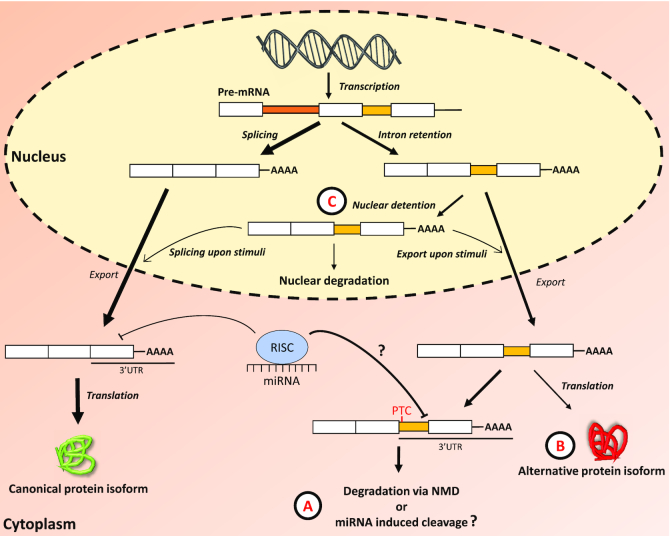Figure 1.
The retention of an intronic sequence within the mature mRNA molecule can lead to multiple distinct fates. (A) IR transcripts are exported to the cytoplasm where they can interact with the ribosomal machinery, thus triggering their degradation via nonsense-mediated decay (NMD) if a premature termination codon (PTC) is encountered. The degradation of IR transcripts may also occur via interaction with the miRNA-RISC complex as retained introns located in the 3′ UTR of mature transcripts increase the number of miRNA binding sites. (B) The interaction with the ribosomal machinery can also lead to the production of alternative protein isoforms with novel biological functions. (C) IR transcripts can also be detained in the nucleus (ID), thus preventing the export of mRNAs and inhibiting translation. Detained IR transcripts may be degraded by nucleases, or are exported to the cytoplasm as fully spliced mRNAs or IR transcripts upon specific stimuli. Legend: question mark ?—degradation of IR transcripts via miRNA induced cleavage remains to be validated experimentally, RISC—RNA-induced silencing complex, miRNA—microRNA.

